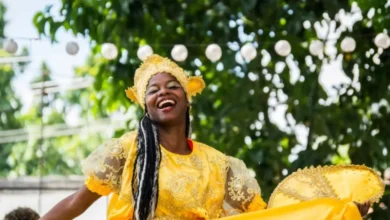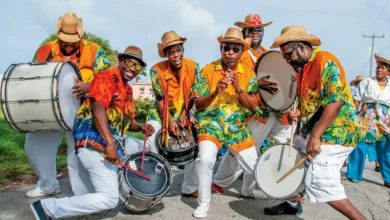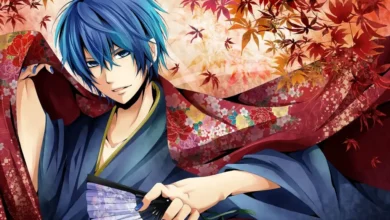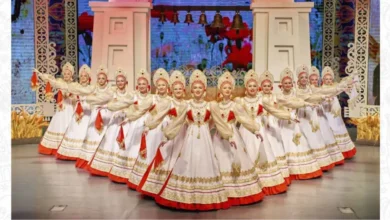For too long, the vibrant tapestry of African culture has been relegated to the margins of global discourse. However, a dynamic shift is underway. Today, the influence of African music, fashion, and art is not only being recognized but is actively shaping global trends. This article delves into this exciting phenomenon, exploring how African creativity is captivating the world and making an indelible mark on diverse creative industries.
The Rhythmic Revolution: African Music Takes Center Stage
African music, in its diverse forms, is experiencing an unprecedented surge in popularity. From the infectious beats of Afrobeats to the soulful melodies of traditional rhythms, the continent’s musical landscape is resonating with audiences worldwide. This isn’t just about fleeting trends; it’s a testament to the powerful storytelling, rhythmic complexity, and inherent emotionality present in African musical traditions.
Afrobeats: A Global Phenomenon
Afrobeats, with its fusion of West African styles, hip-hop, and R&B, is perhaps the most visible example of this musical revolution. Artists like Burna Boy, Wizkid, and Davido have not only achieved international stardom but have also introduced global audiences to a genre that is both contemporary and rooted in tradition.
Their music, characterized by catchy hooks, complex polyrhythms, and often delivered in Nigerian Pidgin or Yoruba, has become a staple in clubs and streaming charts worldwide. The global reach of Afrobeats is evident in sold-out arena tours and collaborations with major international artists, demonstrating its powerful cross-cultural appeal.
See also Australian Culture. From Indigenous Traditions to Global Surfing Trends
Australian Culture. From Indigenous Traditions to Global Surfing TrendsBeyond Afrobeats: Exploring Musical Diversity
While Afrobeats dominates the mainstream, it’s crucial to acknowledge the incredible diversity of African music. From the elegant melodies of Ethiopian jazz to the hypnotic rhythms of South African gqom, the continent boasts a rich spectrum of musical styles. Artists such as Angelique Kidjo and Youssou N’Dour have long been pioneers, introducing the world to diverse sounds from Benin and Senegal respectively.
The growing recognition of genres like Amapiano from South Africa highlights how the continent continues to produce innovative and engaging music that resonates globally. The increasing accessibility of digital music platforms allows listeners worldwide to discover these unique sounds and appreciate their cultural significance.
The Role of Digital Platforms
The rise of streaming services and social media platforms has undeniably played a crucial role in the global dissemination of African music. Platforms like Spotify, Apple Music, and YouTube have democratized access, allowing artists from across the continent to reach listeners globally.
Moreover, social media platforms, especially TikTok and Instagram, have become powerful tools for sharing music and dance, further amplifying the reach of African artists and their unique cultural expressions. This digital revolution has bypassed traditional gatekeepers, allowing for a more organic and authentic connection between artists and their audiences.
See also British Culture and Its Influence on Global Literature and Entertainment
British Culture and Its Influence on Global Literature and EntertainmentFashion’s African Renaissance: Bold Colors, Intricate Patterns, and Cultural Narratives
The influence of African culture on the fashion industry is nothing short of a renaissance. For years, African aesthetics were often misappropriated or overlooked, but now, they are celebrated and respected as sources of creativity and innovation. African designers are at the forefront, showcasing unique textiles, bold silhouettes, and intricate patterns that tell stories of heritage and contemporary identity.
Textile Traditions: More Than Just Fabric
African textiles like Ankara, Kente, and Adire are gaining global recognition for their vibrant colors, striking geometric patterns, and rich cultural significance. These fabrics are not simply decorative; they are imbued with history, symbolism, and cultural narratives. Ankara, for example, initially created by Europeans but then embraced by West Africans, has evolved into a powerful symbol of African identity and pride.
The use of these textiles by both African and non-African designers in contemporary fashion signifies a powerful shift toward recognizing and valuing cultural heritage. The global appreciation for these textiles also contributes to sustaining local artisans and preserving traditional craft techniques.
African Designers: Leading the Way
A new generation of talented African designers are gaining international acclaim. Designers like Thebe Magugu, Kenneth Ize, and Maki Oh are redefining the landscape of fashion with their innovative designs that blend contemporary aesthetics with traditional craftsmanship and cultural references.
They are showcasing their work at major fashion weeks globally, gracing the pages of international fashion magazines, and collaborating with major brands, demonstrating the immense impact they are having on the industry. These designers are not just creating beautiful clothes; they are also using their platforms to highlight social and political issues, further emphasizing the power of fashion to tell meaningful stories.
The Impact on Global Fashion Trends
The influence of African fashion is now evident in mainstream trends. From the use of bold, vibrant colors and prints to the incorporation of traditional silhouettes and embellishments, African aesthetics are making their way into the collections of both luxury and high-street brands.
This cross-pollination of styles is a testament to the growing recognition and appreciation for the unique design sensibilities of the continent. This integration of African elements into global fashion represents a move towards greater inclusivity and a celebration of diversity.
The Power of Visual Storytelling: African Art’s Global Impact
African art, in its myriad forms, possesses a unique ability to convey powerful stories, embody cultural values, and spark meaningful dialogue. From ancient sculptures and intricate beadwork to contemporary paintings and installations, the art of the African continent is captivating audiences globally and challenging traditional notions of artistic expression. This growing appreciation is fostering a deeper understanding of the rich diversity and historical significance of African art.
Ancient Traditions and Contemporary Expressions
The influence of ancient African artistic traditions on contemporary art is profound. The use of symbolism, natural materials, and abstract forms seen in traditional sculpture and masks continues to inspire artists working in various mediums today. At the same time, a new generation of African artists are pushing creative boundaries, using their art to explore complex social, political, and cultural issues.
They are employing diverse techniques and mediums, from painting and sculpture to photography and digital art, to create compelling narratives that reflect the realities and aspirations of contemporary Africa. This interplay between tradition and modernity is a defining characteristic of the current African art scene.
African Art in the Global Art Market
African art is increasingly gaining recognition and value in the global art market. Works by both established and emerging African artists are fetching record prices at international auctions and gallery shows. This increased demand is not just a result of market speculation; it reflects a genuine appreciation for the quality, originality, and cultural significance of African art.
The rise of dedicated art fairs focused on African art and the increasing presence of African artists in major exhibitions underscores this shift in the global art landscape. This increased visibility has allowed a broader audience to engage with these artworks and appreciate the diversity of artistic expression originating from the continent.
Art as a Medium for Social Commentary
Many contemporary African artists are using their work as a powerful medium for social and political commentary. They tackle critical issues like colonialism, identity, inequality, and environmental degradation, sparking conversations and raising awareness about the complex realities of the African experience.
Their art serves as a form of activism, challenging established narratives and promoting a more nuanced understanding of the continent. The global reach of these art pieces allows for a broader audience to engage with these crucial conversations, fostering understanding and encouraging empathy.
The Importance of Cultural Exchange and Respect
The growing global influence of African culture is a testament to its power and relevance in the 21st century. However, it’s crucial that this recognition is accompanied by a genuine respect for cultural heritage and intellectual property. It is essential to ensure that cultural exchange is mutually beneficial, avoiding appropriation and ensuring that the contributions of African artists, designers, and musicians are acknowledged and fairly compensated. This commitment to ethical engagement will not only ensure the sustainability of cultural expressions but will also foster a more inclusive and understanding global community.
Moving Forward: Continued Appreciation and Engagement
The rise of African influence in music, fashion, and art is not merely a trend; it is a profound cultural shift. It reflects a growing global desire for diverse perspectives and a recognition of the immense creativity and talent that exists across the African continent. It’s important to continue engaging with and supporting African artists, designers, and musicians, ensuring that their voices are heard and that their cultural contributions are celebrated. This continued appreciation and support will foster a more vibrant and inclusive global creative landscape.
In conclusion, the growing influence of African culture on music, fashion, and art is a testament to its vibrancy, originality, and enduring power. This global recognition marks a significant step forward in dismantling biased narratives and celebrating the rich tapestry of human creativity. As we continue to witness the continent’s artistic contributions, it is crucial to engage with them respectfully and collaboratively, ensuring that the voices and stories of Africa are heard and valued by all.“`




